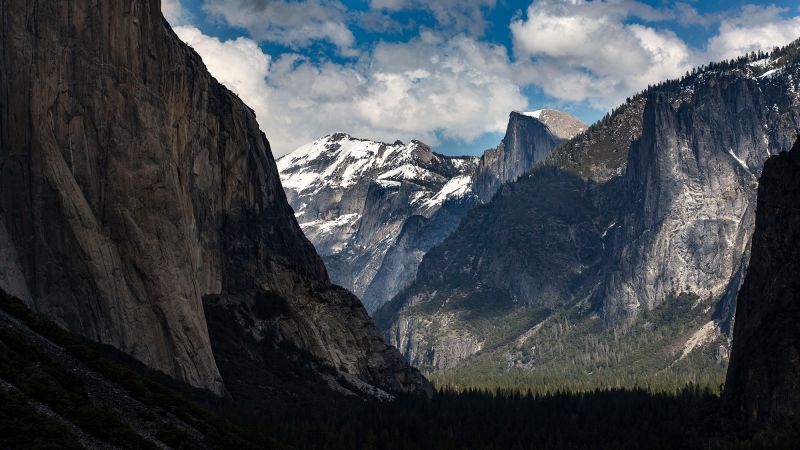In recent studies, seismologist Deborah Kilb has made a remarkable discovery while examining California’s earthquake records spanning four decades. While analyzing data from Northern and Southern California, Kilb noted an unusual pattern involving a series of deep earthquakes occurring beneath the Sierra Nevada mountain range. Typically, earthquakes are most profound at depths of about 10 kilometers (6 miles) in Northern California and 18 kilometers (11 miles) in the southern region. However, Kilb uncovered reports of seismic activity reaching depths between 20 and 40 kilometers (12.4 miles to 25 miles), an anomaly she states is seldom observed in crustal earthquakes.
These unexpected seismic events, originating from depths much greater than previously recorded, piqued Kilb’s interest immensely. Her initial findings soon led her to collaborate with Vera Schulte-Pelkum, a research scientist at the Cooperative Institute for Research in Environmental Sciences and an associate research professor at the University of Colorado Boulder. Schulte-Pelkum has previously focused on the unique geological features of the Sierra Nevada, which displayed deep rock deformations in the same vicinity. Together, they employed receiver function analysis—a technique relying on seismic waves to create detailed images of the Earth’s internal structure—to monitor the earthquakes more effectively.
Their comprehensive imaging efforts revealed a striking phenomenon: the lithosphere, Earth’s rigid outermost layer, appears to be peeling away beneath the Sierra Nevada. This process, referred to scientifically as lithospheric foundering, is thought to fundamentally reshape the mountain range, with ongoing deformations detected in the central region. The authors of this essential exploration reported their findings within the pages of the journal *Geophysical Research Letters* in December.
The hypotheses generated from these results support theories that the Sierra Nevada has experienced lithospheric foundering over time, indicating that this geological process is continuous, currently progressing to the north of the mountain range. Schulte-Pelkum remarked upon the synergy between the findings of their individual studies, explaining that the peculiar arrangement of rocks and Kilb’s discovery of deep earthquakes were intertwined in a significant geological narrative.
Experts suggest these geological developments afford remarkable insights into Earth’s tectonic processes and continental formation mechanisms. The existence of the lithosphere, comprised of the Earth’s rigid crust coupled with a top denser yet more fluid mantle, leads to questions about how these layers sustain themselves. Schulte-Pelkum elaborated on this, emphasizing the lighter mineral composition that characterizes landmasses. “The continents just happened to be sticking up above the current sea level, luckily for us,” she explained, attributing the phenomenon to geological chance wherein denser materials are relegated to the lower layers.
Moreover, the findings indicate that the ongoing lithospheric foundering relates to how distinct landforms emerge, with denser materials sinking and less dense materials rising, effectively creating new land. According to the data gathered, a defining layer of the mantle was observed at depths between 40 to 70 kilometers (25 to 43 miles), which exhibited noticeable variations extending due north. The nuances of this geological behavior underscore the slow yet transformative nature of Earth’s internal adjustments.
Additional layers of complexity surface in the southern Sierra, where the heavy rocks are already observed to separate from the crust, contrasting with the central region currently undergirded by active lithospheric foundering. Such rich geological study unveils the transformative processes shaping the Sierra Nevada. With estimations positing that these alterations may require millions of years, a clearer understanding of the long-term effects of lithospheric dynamics can assist researchers in comprehending ongoing seismic occurrences around the world.
This knowledge is particularly pertinent as researchers continue to pursue clarifications around the Sierra Nevada, where debates around the geological influences of lithospheric foundering and subduction continue to unfold. The complexity of these processes highlights the necessity for ongoing research, which can offer deeper insights into Earth’s mechanisms of evolution over extensive timelines. Ultimately, by integrating these geological datasets, scientists may not only enhance our grasp of earthquakes and ground shifts but may also acquire information applicable beyond Earth. For instance, apparent instances of lithospheric foundering on Venus suggest that comparative studies may illuminate our understanding of our neighboring planet.
Ultimately, the continuous geological dynamics beneath the Sierra Nevada serve as a reminder of the complexities that persist beneath our feet, shaping the world in ways that significantly influence both life and landscape. “If the Earth hadn’t made continents, then we’d be very different creatures,” concluded Schulte-Pelkum, emphasizing the fundamental connections between deep Earth processes and the evolution of life on our planet.












